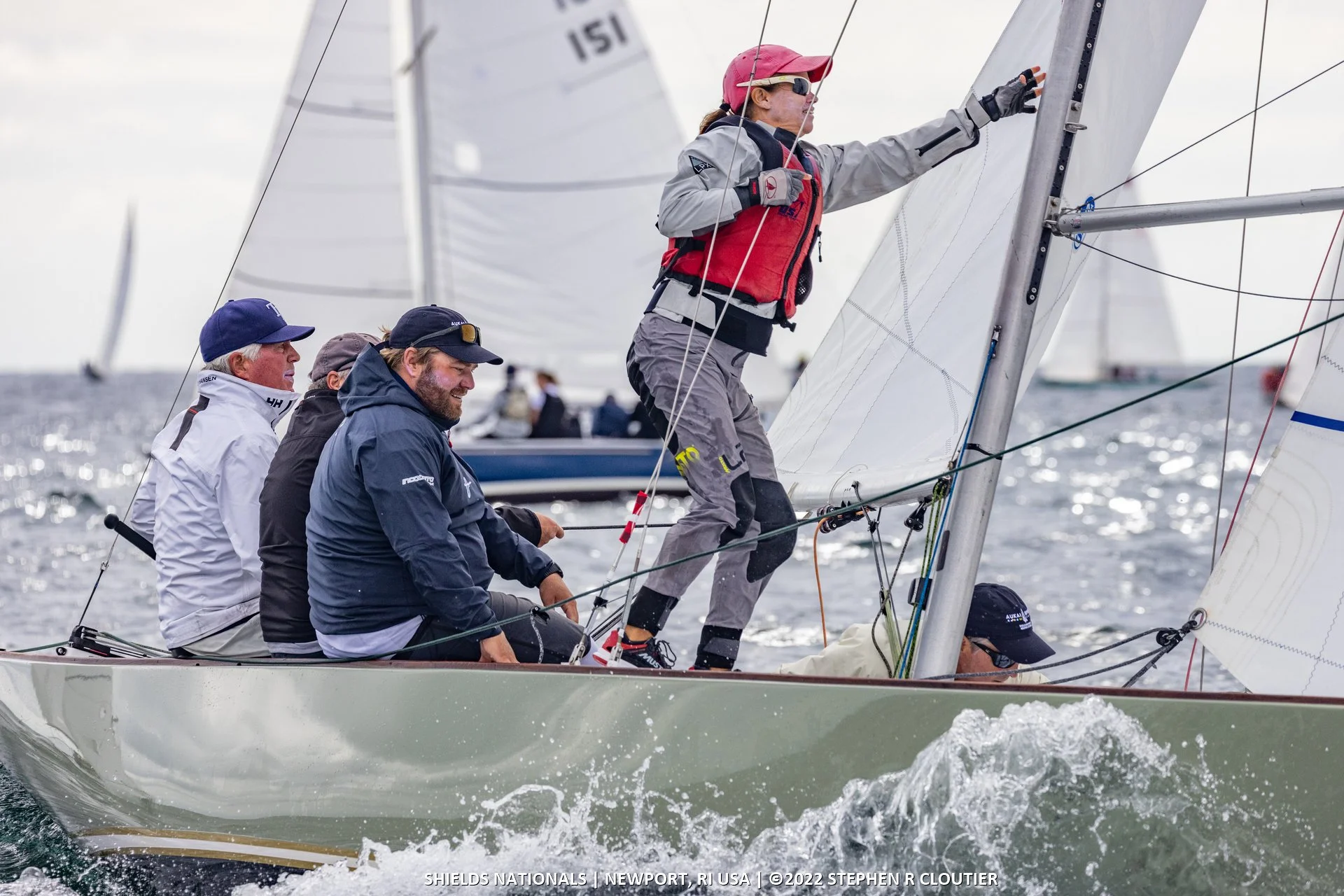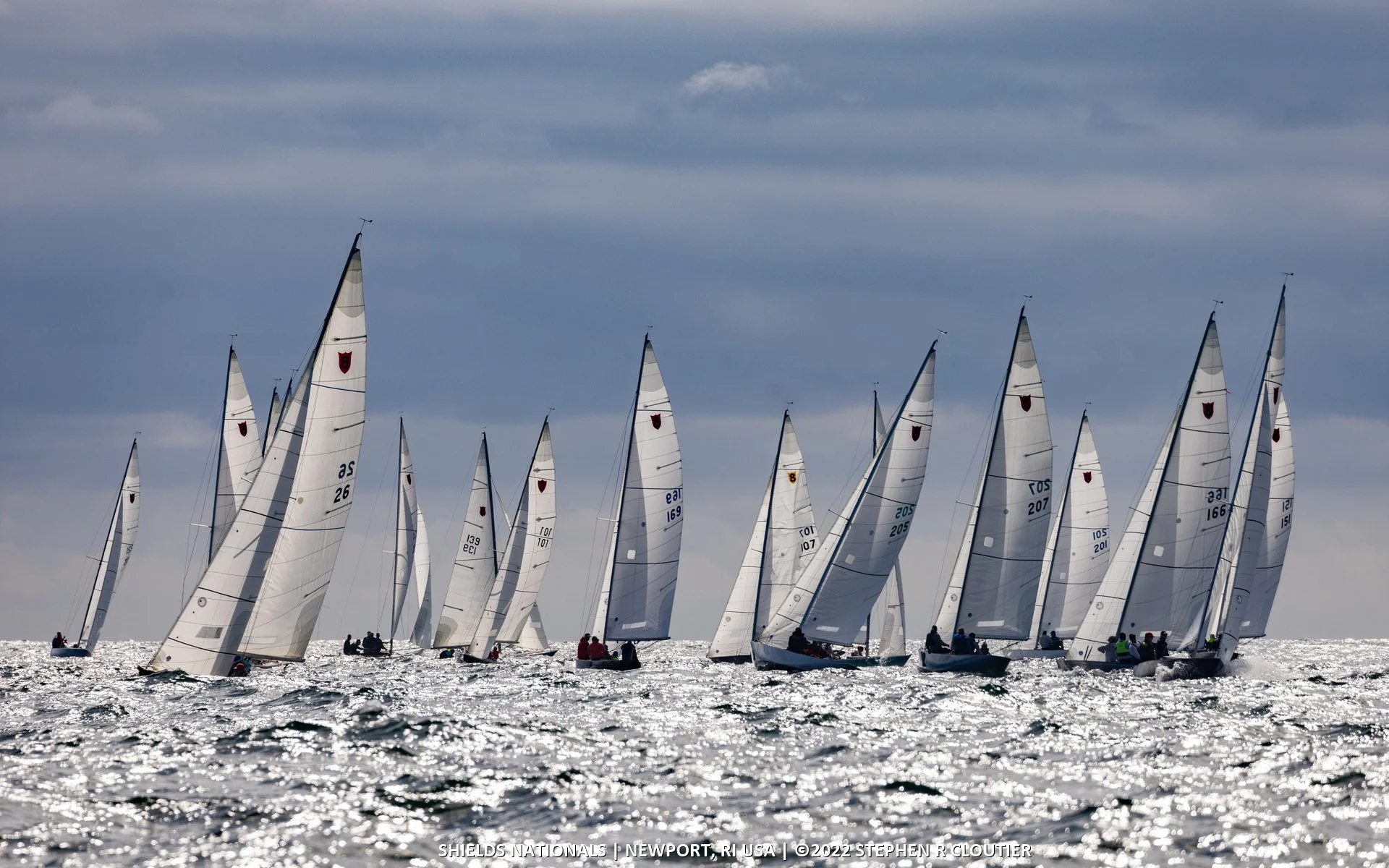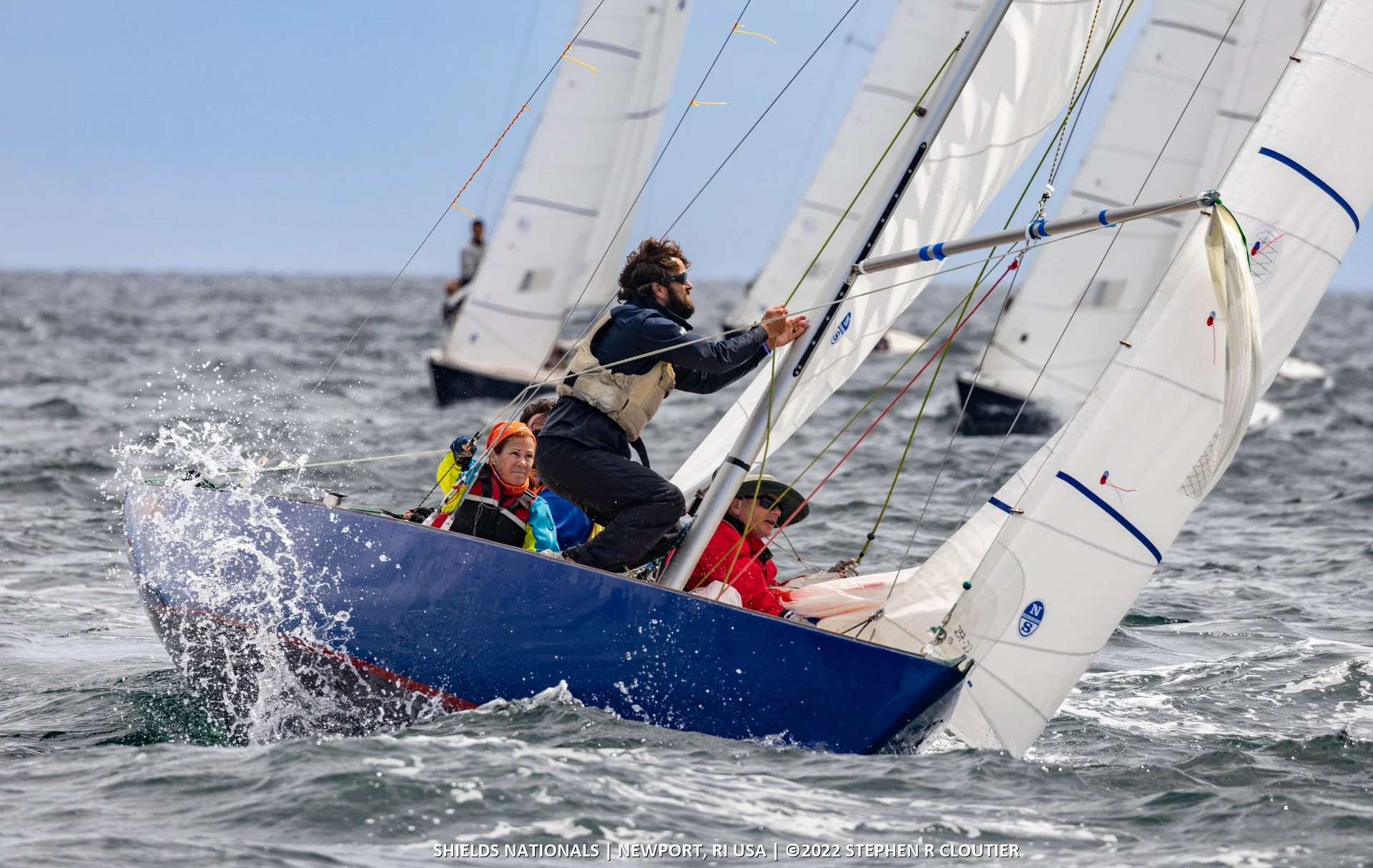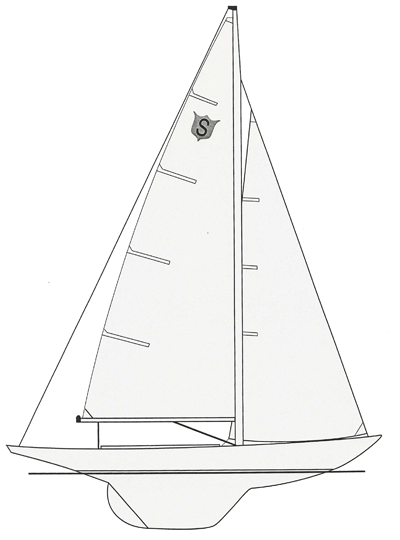Analog Practice in a Digital World
by John Burnham
John is a leadership coach and writer, based on the East Coast of the USA. In addition to Shields, he also sails wooden boats!
Image Stephen Cloutier
The first time I remember the terms “analog” and “digital” together was in 2011 at a debate about the equipment rules in the Shields sailing class. Would we allow sailors to use compasses with digital readouts in lieu of traditional marine or card compasses? That’s when someone spoke up and said, “The Shields should remain an analog class in a digital world.”
Even though class members ultimately voted to allow the digital compasses, the logic of the phrase resonated with me. Racing a sailboat designed in the 1960s is an old-school pastime, and having a compass that provides continuous spatial feedback rather than rapidly refreshed electrical signals made sense to me. I didn’t want my natural world of sailing sullied by one more digital device.
In retrospect, my thinking seems somewhat naive. We now carry smartwatches and smartphones that download weather data and track both our position and speed on high-resolution charts. These devices can also answer any question we can think to ask, and if we make a sudden movement, they sometimes ask us if we’re OK!
Image Stephen Cloutier
Our Shields class rules have held the line for the most part, fortunately, and we can’t use most of these capabilities during a race. Our experience of complete immersion in a natural-world experience while competing on our Shields remains much the same as 15 years ago.
Ashore, it’s a different story. As the day begins, we reach for our phones and essentially plug our brains into the Internet for the day. Hour after hour, we consume and create yet more information, an ever-expanding library in the sky that will soon be dwarfed by the amount of internet content being generated by artificial intelligence.
Chemically, I wonder how much our brains have already been altered by this, and what happens next as VR software becomes standard fare? Soon, we’ll have access to a hyper-realistic virtual world that technologists suggest we’ll experience with all five of our senses.
I’ll get to my point now since few of us still have the attention span to take in much more than seven consecutive paragraphs: the only antidote I can see is increased commitment to analog activities that engage us in the real world, especially real-time communications with other humans.
As a writer, editor, and all-around collaborator, I love the efficiency of asynchronous communications provided by online calendars, cloud documents, email, and blog posts. But the benefit of that efficiency should be to take more time to communicate directly and authentically with people that matter most, whether that’s your family, friends, or your team at work.
Image Stephen Cloutier
When we take time to connect in real time, whether over coffee or on Facetime, we have the opportunity to empathize when we hear of the grief, sadness, and anger that go with loss. We learn when someone disagrees with us. We are energized when we embrace someone’s enthusiasm, excitement, or happiness.
This is one principal reason I am compelled to sail on the Shields, or any other boat. When we arrive aboard and nobody else is there but our crewmates, we gradually leave the land behind and unwind. We realize once again that we’re sharing time, space, and an experience that is both personal and communal.
On a boat, together, we clean up the bird poop, untie tricky knots, fix sticky parts, and occasionally skin our knuckles and bleed. That’s even before we raise the sails and use the natural force of the wind to propel our boat forward, feeling the waves beneath the hull and the salt spray on our faces. We immerse ourselves in the miracle of this physical world.
Swimming, hiking, gardening, or a thousand other real-world activities. What speaks to you in this way, and why is it important for you to make time for it?
For me, growth happens in these spaces where authentic experience and communication takes place. So does meaning and appreciation for the transience of this intimate moment and the next. Our days are numbered, and whenever we count down the last ones, will we wish we had spent more time in the artificial world—or in the analog world, engaged and truly connected to each other?
Image Stephen Cloutier
The Shields, also called the Shields 30 and the Shields One-Design, is an American trailerable sailboat that was designed by Olin Stephens of Sparkman & Stephens as a one design racer and first built in 1962. The design was commissioned by American sailor Cornelius Shields, as a fiberglass replacement for the 1930s vintage International One Design and is Sparkman & Stephens design #1720. Shields had boats with hull numbers 1 to 31 constructed at Cape Cod Shipbuilding and he donated them to several American universities on the US east coast. The boat class was named after him in honour of his donations. In the end he donated over 100 of the boats to various colleges and universities, including 15 donated to universities in southern California.
The design was initially built by Cape Cod Shipbuilding, then hulls numbers 32 to 189 by Chris-Craft Industries and hull numbers 190 to 200 by Hinckley Yachts in the United States. Today it is once again hull numbers 201 to 259 built by Cape Cod Shipbuilding and remains in production.





